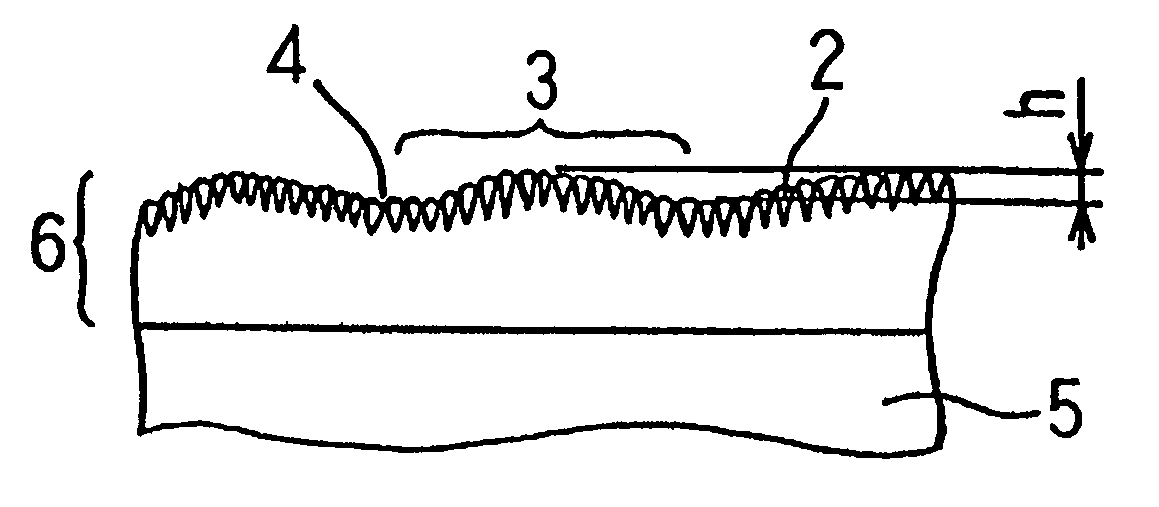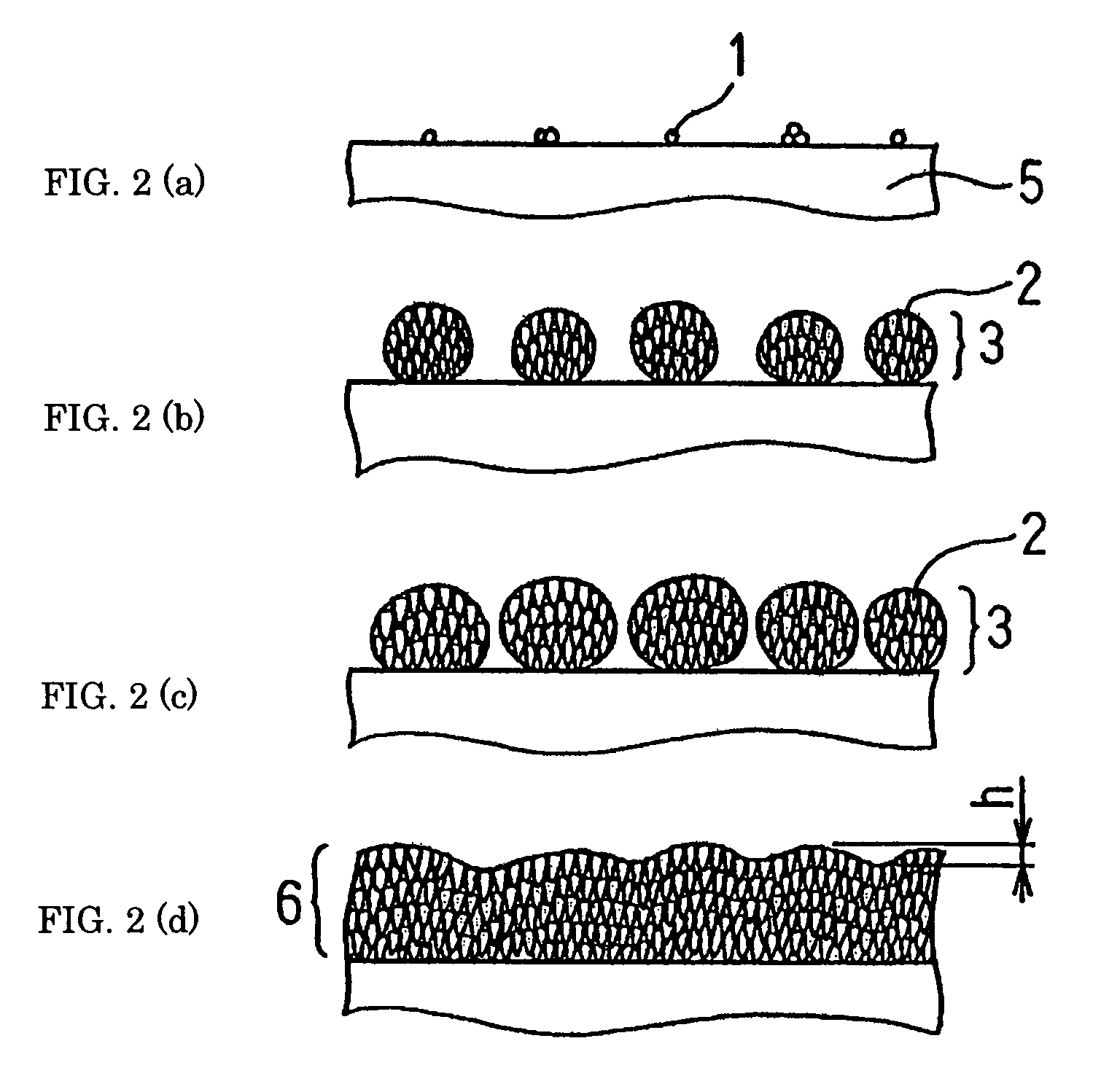Diamond film coated tool and process for producing the same
a technology of diamond coating and diamond coating, which is applied in the direction of manufacturing tools, natural mineral layered products, transportation and packaging, etc., can solve the problems of inadequate engagement to work, poor and inability to achieve significant improvement of diamond coating adhesion and adhesion of diamond coating to the substrate. , the effect of improving the adhesion of diamond coating
- Summary
- Abstract
- Description
- Claims
- Application Information
AI Technical Summary
Benefits of technology
Problems solved by technology
Method used
Image
Examples
embodiment 1
[0082]In order to validate the effectiveness of conditions for generation of polycrystalline diamond aggregate 3 which is requisite constituent elements of the present invention, a strip of cemented carbide (10×10×1t (mm)) containing 5 mass % of Co was prepared as a substrate 5, and an experiment was conducted to coat the substrate with diamond film. The prepared substrates 5 included carburized substrates and non-carburized ones. For the carburization, the substrate was placed in hot-filament CVD equipment and processed for 6 hours in a 1 vol. % methane-hydrogen mixed gas atmosphere at an ambient temperature of about 900° C. under pressure of 13.0 kPa. The magnitude of saturation magnetization of the carburized substrate was 97.5-98.5 G-cm3 / g, while the non-carburized substrate had a saturation magnetization of 80-83G-cm3 / g.
[0083]Then, these substrates were coated with diamond by growing the diamond to a thickness of 10 micrometers under five varied magnitudes of synthesizing press...
embodiment 2
[0085]In order to determine the difference in tool performance by the extent of undulation h of the surface of a diamond coating (See FIG. 1), an end mill with a diameter of 8 mm was made and its performance was evaluated. A cemented carbide containing 5 mass % of Co was used as a substrate. This substrate was placed in hot-filament CVD equipment and processed therein for carburization for 6 hours in a 1 vol. % methane-hydrogen mixed gas atmosphere at an ambient temperature of about 900° C. under pressure of 13.0 kPa. Then, the substrate was coated with diamond so that the diamond coating grew to about 20 micrometers in thickness. The coating was formed of diamond aggregates and the average grain size of diamond was in the range of about 1.0-1.5 micrometers in all specimens. The grain boundaries of diamond formed grooves.
[0086]The diamond coating was formed using hot-filament CVD equipment with its process conditions including a hydrogen flow rate of 1,700 sccm, methane flow rate of...
embodiment 3
[0096]In order to determine the difference in tool performance by RMS values observed on the surface of diamond coating, an end mill with a diameter of 8mm was made and its performance was evaluated. A cemented carbide containing 5 mass % of Co was used as a substrate. This substrate was placed in hot-filament CVD equipment and processed therein for carburization for 6 hours in a 1 vol. % methane-hydrogen mixed gas atmosphere at an ambient temperature of about 900° C. under pressure of 13.0 kPa. Then, the substrate was coated with diamond so that the diamond coating grew to about 20 micrometers in thickness.
[0097]The resultant coating was formed of diamond aggregates and the average grain size of diamond was in the range of about 0.7-1.0 micrometers in all specimens. The diamond coating 6 was formed using hot-filament CVD equipment with its process conditions including a hydrogen flow rate of 1,700 sccm, methane flow rate of 45 sccm, synthesizing pressure of 3.9 kPa, filament temper...
PUM
| Property | Measurement | Unit |
|---|---|---|
| grain size | aaaaa | aaaaa |
| diameter | aaaaa | aaaaa |
| thickness | aaaaa | aaaaa |
Abstract
Description
Claims
Application Information
 Login to View More
Login to View More - R&D
- Intellectual Property
- Life Sciences
- Materials
- Tech Scout
- Unparalleled Data Quality
- Higher Quality Content
- 60% Fewer Hallucinations
Browse by: Latest US Patents, China's latest patents, Technical Efficacy Thesaurus, Application Domain, Technology Topic, Popular Technical Reports.
© 2025 PatSnap. All rights reserved.Legal|Privacy policy|Modern Slavery Act Transparency Statement|Sitemap|About US| Contact US: help@patsnap.com



